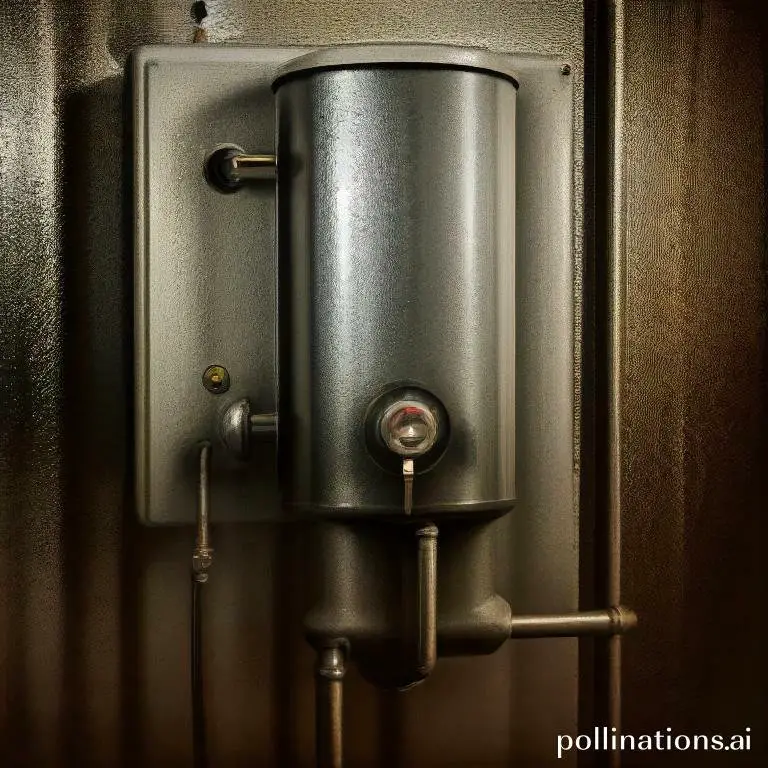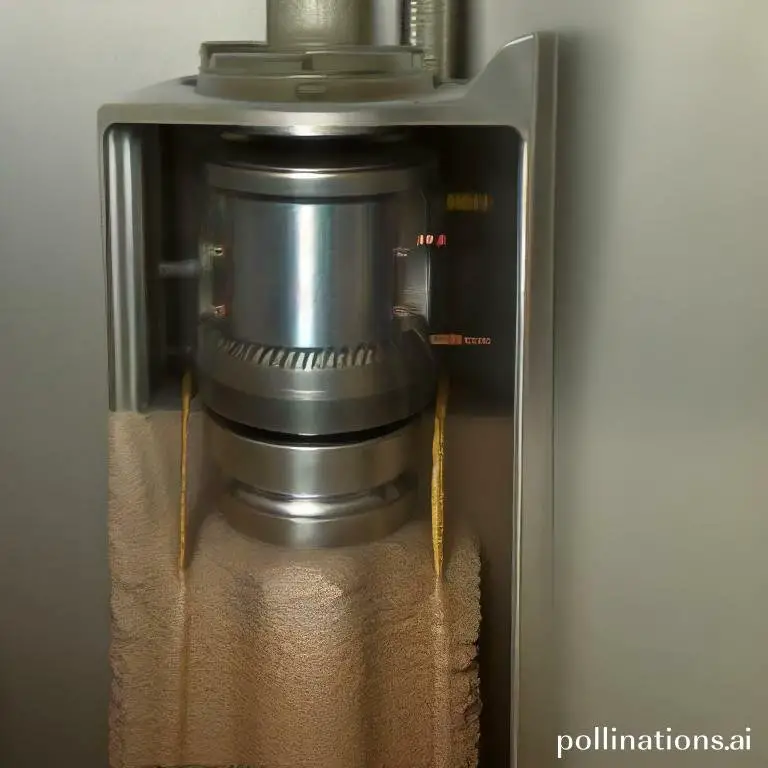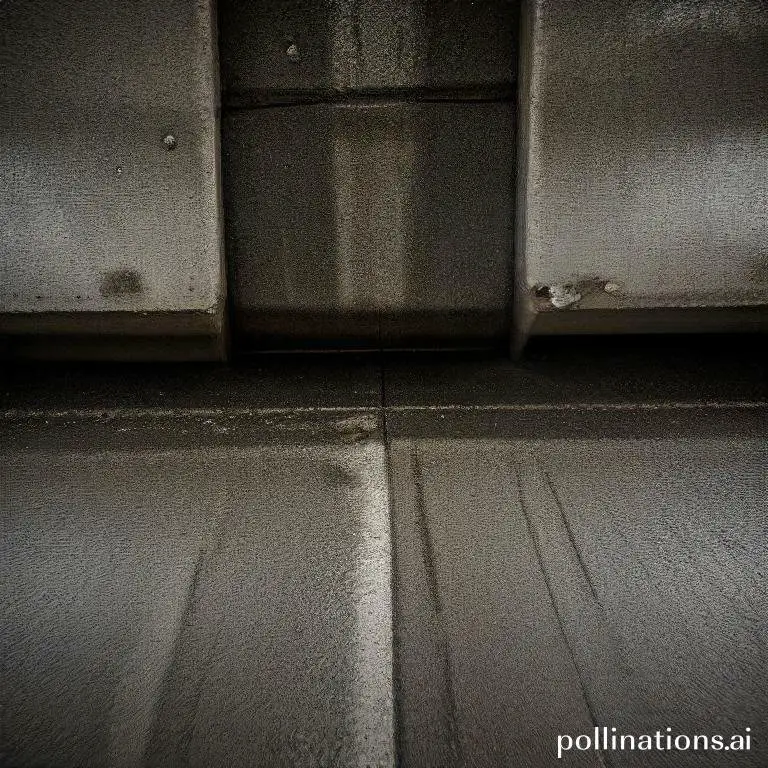
II. Regular maintenance, such as flushing the tank and checking the anode rod, can help prevent sediment accumulation and prolong the heater’s lifespan.
III. Inaccurate thermostat readings can also lead to problems, such as scalding or inadequate hot water supply, and should be checked and calibrated regularly.
Maintaining clean and efficient water systems is crucial for optimal performance. Sediment removal plays a vital role in ensuring the longevity of your water heater by preventing the build-up of debris.
Additionally, accurate thermostat settings can elevate energy efficiency and provide consistent hot water temperatures. In this article, we will ponder the importance of sediment removal and the significance of precise thermostat accuracy in maintaining a reliable and efficient water heating system.
Sediment Removal
Water heaters are prone to sediment buildup over time, which can have various negative effects on their performance and efficiency. Imperative to understand what sediment is, the consequences it can have, and how to effectively remove it from a water heater.
1. What is sediment in water heaters?
Sediment in water heaters refers to the accumulation of minerals, debris, and other particles that settle at the bottom of the tank. This sediment is primarily composed of minerals like calcium and magnesium, which are commonly found in tap water.
Over time, this sediment can harden and form a layer at the bottom of the tank, reducing the available space for water storage and interfering with the heating process.
2. Consequences of sediment buildup
Sediment buildup in water heaters can lead to several problems. To start with, it reduces the efficiency of the heating element, as the sediment layer acts as an insulator and hinders the transfer of heat from the burner or heating element to the water.
Additionally, sediment can cause the water heater to make rumbling or popping noises, as the hardened particles are heated and disturbed during the heating process. This can also lead to a decrease in the lifespan of the water heater and potentially result in costly repairs or replacements.
3. How to remove sediment from a water heater
To remove sediment from a water heater, follow these steps:
- Turn off the power supply to the water heater and allow it to cool down.
- Locate the drain valve at the bottom of the tank and attach a hose to it.
- Place the other end of the hose in a suitable drainage area, such as a floor drain or a bucket.
- Open the drain valve and let the water flow out, flushing out the sediment along with it.
- Once the water runs clear, close the drain valve and remove the hose.
- Turn on the water supply and allow the tank to fill up before turning the power back on.
4. Recommended frequency of sediment removal
The frequency of sediment removal depends on various factors, such as the hardness of the water in your area and the usage patterns of your water heater. As a general guideline, it is recommended to flush out the sediment from your water heater at least once a year.
Regular maintenance and sediment removal can help ensure the optimal performance and longevity of your water heater, saving you money on energy bills and preventing potential issues in the future.
| Sediment Removal Steps | Benefits |
|---|---|
| Turn off power supply and allow the water heater to cool down. | Ensures safety and prevents accidental burns. |
| Attach a hose to the drain valve at the bottom of the tank. | Facilitates easy drainage of water and sediment. |
| Open the drain valve and let the water flow out. | Flushes out the sediment and improves water heater performance. |
| Close the drain valve and remove the hose. | Prevents water leakage and ensures proper functioning of the water heater. |
| Turn on the water supply and allow the tank to fill up. | Restores water supply and heating capabilities. |
Regular sediment removal, in accordance with the recommended frequency, will help maintain your water heater’s efficiency and ensure a reliable supply of hot water.
Water Heater Thermostat Accuracy
1. What is a water heater thermostat?
A water heater thermostat is a device that controls the temperature of the water in a water heater. It is responsible for maintaining the desired temperature and preventing the water from becoming too hot or too cold. The thermostat helps to ensure that the water heater operates efficiently and safely.2. Importance of accurate thermostat settings
Accurate thermostat settings are crucial for several reasons. To begin with, they ensure that the water is heated to the desired temperature, providing comfort and convenience for users. Furthermore, accurate settings help to conserve energy and reduce utility bills by preventing unnecessary heating. Thirdly, they contribute to the longevity of the water heater by avoiding excessive wear and tear caused by temperature fluctuations.3. Signs of a malfunctioning thermostat
There are a few signs that indicate a malfunctioning water heater thermostat. One common sign is inconsistent water temperatures, where the water may be too hot or too cold even when the thermostat is set correctly. Another sign is a complete failure of the water heater to heat the water. Additionally, if the water heater constantly runs or cycles on and off frequently, it may be a sign of a faulty thermostat.4. How to calibrate a water heater thermostat
Calibrating a water heater thermostat is a relatively simple process. Start by turning off the power to the water heater and allowing it to cool down. Then, locate the thermostat and remove the cover. Use a thermometer to measure the water temperature at the faucet nearest to the water heater. Compare this temperature to the thermostat setting and adjust it if necessary. It may require turning the thermostat dial or pressing buttons, depending on the type of thermostat. Once the adjustment is made, replace the cover and restore power to the water heater.Common Issues with Sediment and Thermostat Accuracy
In this section, we will discuss the common issues that arise due to sediment buildup and how it affects the accuracy of thermostats. Pivotal to understand these issues in order to troubleshoot and fix any problems that may occur.
1. How sediment buildup affects thermostat accuracy
Sediment buildup can have a significant impact on the accuracy of thermostats. When sediment accumulates in the system, it can interfere with the proper functioning of the thermostat. This can lead to inaccurate temperature readings and inefficient heating or cooling.
2. Common signs of sediment buildup and thermostat issues
There are several signs that indicate the presence of sediment buildup and potential thermostat issues. These signs include:
- Fluctuating temperature readings
- Uneven heating or cooling
- Poor airflow
- Noise coming from the system
If you notice any of these signs, imperative to take action and address the issue as soon as possible. Ignoring sediment buildup and thermostat issues can lead to further damage and higher energy costs.
3. How to troubleshoot and fix sediment and thermostat problems
If you suspect sediment buildup or thermostat issues, there are several steps you can take to troubleshoot and fix the problems:
- Inspect the thermostat and surrounding areas for any visible signs of sediment buildup.
- Clean or replace the thermostat if necessary.
- Flush the system to remove any sediment that may be present in the pipes.
- Consider installing a sediment filter to prevent future buildup.
- Regularly maintain and service the system to ensure optimal performance.

Prevention and Maintenance
In the realm of keeping your water heater in optimal condition, prevention and maintenance are key. By upholding a few simple tips and regular maintenance procedures, you can prevent sediment buildup and ensure the longevity of your water heater.
Tips for preventing sediment buildup in water heaters
- Flush your water heater regularly to remove sediment buildup. This can be done by attaching a hose to the drain valve and allowing the water to flow until it runs clear.
- Install a sediment filter or a water softener to reduce the amount of sediment that enters your water heater.
- Set the temperature of your water heater to 120 degrees Fahrenheit or lower. Higher temperatures can lead to increased sediment formation.
- Consider using a descaling agent or vinegar solution to remove stubborn sediment deposits.
Regular maintenance procedures for water heaters
- Check the pressure relief valve regularly to ensure it is functioning properly. This valve helps release excess pressure and prevent damage to the water heater.
- Inspect the anode rod and replace it if necessary. The anode rod helps prevent corrosion inside the water heater tank.
- Check for any leaks or signs of corrosion in the water heater tank or pipes. Promptly repair any issues to prevent further damage.
- Insulate the hot water pipes to reduce heat loss and improve energy efficiency.
Importance of professional maintenance and inspection
In the course of regular maintenance can go a long way in preventing issues, it is also crucial to schedule professional maintenance and inspection for your water heater. A professional can thoroughly inspect your water heater, identify any potential problems, and provide the necessary repairs or replacements. Professional maintenance not only ensures the optimal performance of your water heater but also enhances its safety and efficiency.
| Topic | Information |
|---|---|
| Sediment buildup prevention | Regular flushing, installation of filters, temperature control |
| Maintenance procedures | Pressure relief valve check, anode rod inspection, leak detection |
| Professional maintenance | Thorough inspection, repairs, safety enhancement |

Upgrading Your Water Heater
As for upgrading your water heater, there are a few key considerations to keep in mind. Whether your current water heater is outdated, inefficient, or simply not meeting your needs, it may be time to scrutinize the benefits of upgrading to a newer model.
1. When to consider upgrading your water heater
There are several signs that indicate it may be time to upgrade your water heater. If you find that your hot water supply is inconsistent or running out too quickly, it could be a sign that your current water heater is not functioning optimally. Additionally, if your water heater is more than 10 years old, it may be nearing the end of its lifespan and could benefit from an upgrade.
2. Types of water heaters available
When considering an upgrade, it’s important to familiarize yourself with the different types of water heaters available. The most common options include tankless water heaters, which provide hot water on demand, and traditional tank water heaters, which store and heat a specific amount of water at all times. Each type has its own advantages and considerations, so it’s essential to choose the one that best fits your needs and preferences.
3. Benefits of upgrading to a newer model
Upgrading to a newer water heater model offers several benefits. In the first place, newer models are often more energy-efficient, which can result in cost savings on your utility bills. Additionally, they may provide a more consistent and reliable hot water supply, ensuring that you never run out of hot water when you need it. Furthermore, newer water heaters may come with additional features such as improved insulation or advanced safety measures.
| Type | Advantages | Considerations |
|---|---|---|
| Tankless Water Heaters | – Provides hot water on demand – Energy-efficient – Saves space |
– Higher upfront cost – Limited output capacity – Requires professional installation |
| Traditional Tank Water Heaters | – Lower upfront cost – Simpler installation – Wide range of sizes |
– Constantly heats and stores water – May run out of hot water – Less energy-efficient |
Bottom Line
Relating to sediment removal, regular maintenance is key to ensuring your water heater operates efficiently and effectively. Neglecting this task can lead to a buildup of sediment that can cause damage to your water heater and even shorten its lifespan. Additionally, it’s important to ensure that your water heater thermostat is accurate to prevent wasted energy and higher utility bills. If you’re unsure about how to properly maintain your water heater or check its thermostat accuracy, it’s best to consult with a professional plumber. By taking these steps, you can ensure that your water heater is running smoothly and efficiently, saving you money and preventing potential problems down the line.
Read More:
1. Sediment Impact On Water Heater Recovery Time
2. Sediment Removal Frequency For Solar Water Heaters










